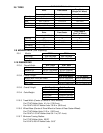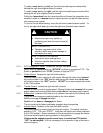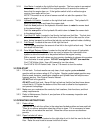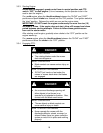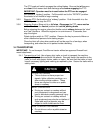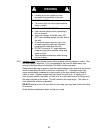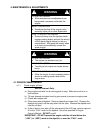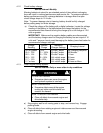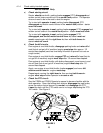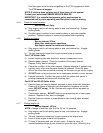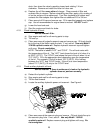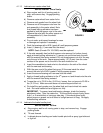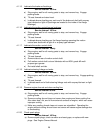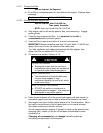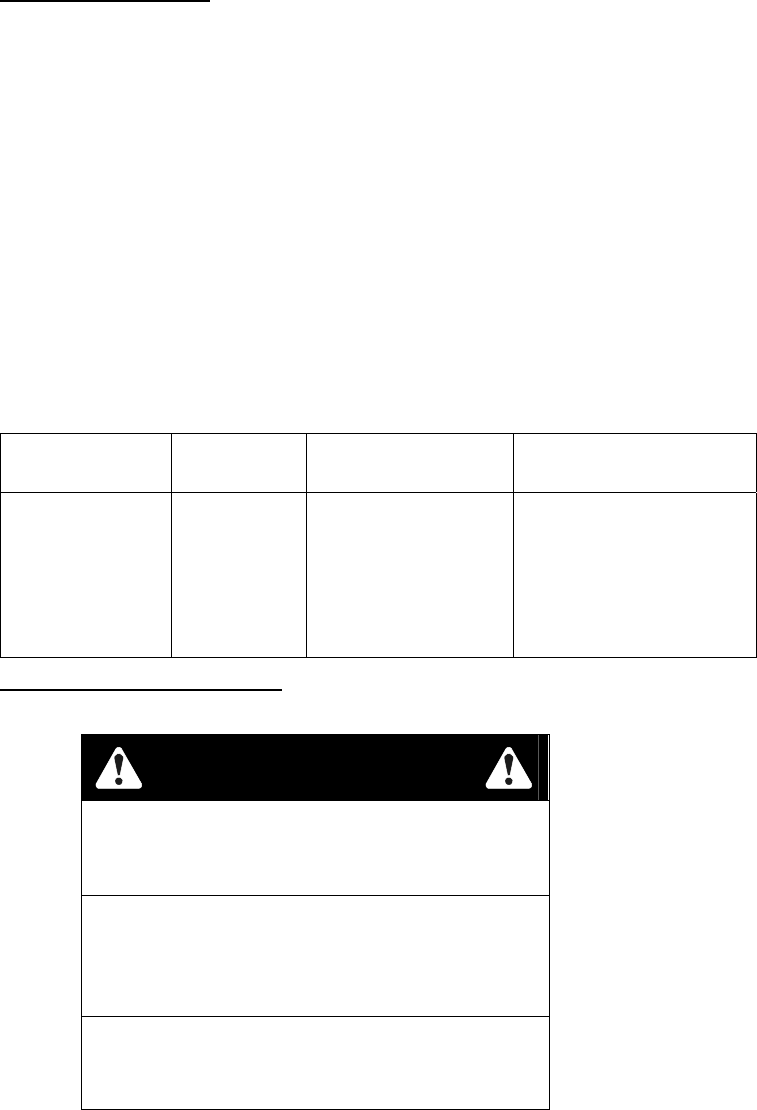
22
4.1.2 Check battery charge
:
Service Interval: Monthly
Allowing batteries to stand for an extended period of time without recharging
them will result in reduced performance and service life. To preserve optimum
battery performance and life, recharge batteries in storage when the open
circuit voltage drops to 12.4 volts.
Note: To prevent damage due to freezing, battery should be fully charged
before putting away for winter storage.
a) Check the voltage of the battery with a digital voltmeter. Locate the voltage
reading of the battery in the table below and charge the battery for the
recommended time interval to bring the charge up to a full charge of 12.6
volts or greater.
IMPORTANT: Make sure the negative battery cables are disconnected
and the battery charger used for charging the battery has an output of 16
volts and 7 amps or less to avoid damaging the battery (see chart below for
recommended charger settings).
Voltage
Reading
Percent
Charge
Maximum
Charger Settings
Charging Interval
12.6 or greater 100% 16 volts/7 amps No Charging Required
12.4 – 12.6 75 – 100% 16 volts/7 amps 30 Minutes
12.2 – 12.4 50 – 75% 16 volts/7 amps 1 Hour
12.0 – 12.2 25 – 50% 14.4 volts/4 amps 2 Hours
11.7 – 12.0 0 – 25% 14.4 volts/4 amps 3 Hours
11.7 or less 0% 14.4 volts/2 amps 6 Hours or More
4.1.3 Clean engine cooling system:
Service Interval: Daily or more often in dry conditions
WARNING
POTENTIAL HAZARD
♦ Excessive debris can cause the engine
and hydraulic system to overheat.
WHAT CAN HAPPEN
♦ Excessive debris around the engine
cooling air intake and drive belts can
create a fire hazard.
HOW TO AVOID THE HAZARD
♦ Clean all debris from around engine and
drive belts daily.
a) Stop engine, wait for all moving parts to stop, and remove key. Engage
parking brake.
b) Clean all debris from rotating engine air intake screen and from around
engine shrouding.
c) Clean all debris from around engine and drive belts.



